Collective Intelligence Design for the Climate Crisis
Partnering with the United Nations Development Programme Accelerator Labs to design, test and scale collective intelligence initiatives towards climate adaptation and more equitable climate futures.
Nesta for UNDP Accelerator Labs

The UNDP Accelerator Labs: Reimagining sustainable development
The UNDP Accelerator Labs are the worlds largest learning network focused on critical sustainable development challenges of the 21st century. The Network is composed of 91 Labs covering 115 countries. Each Lab taps into local grassroots innovations to create actionable insights and work towards reimagining sustainable development.
What we are doing
Building on Nestas previous work on Collective Intelligence for Sustainable Development we are working with 15 of the UNDPs Labs to design collective intelligence interventions for improved climate adaptation and mitigation measures with communities at their heart. Over the past 10 months we have been working with the accelerator labs to research local climate problems and identify community based collective intelligence approaches towards more equitable, just and adaptive climate futures, exploring four thematic clusters; Biodiversity and Resource Management, Disaster Risk Reduction, Reducing Climate Related Conflict and Just Energy Transitions.
Climate Justice: Understanding Global Challenges
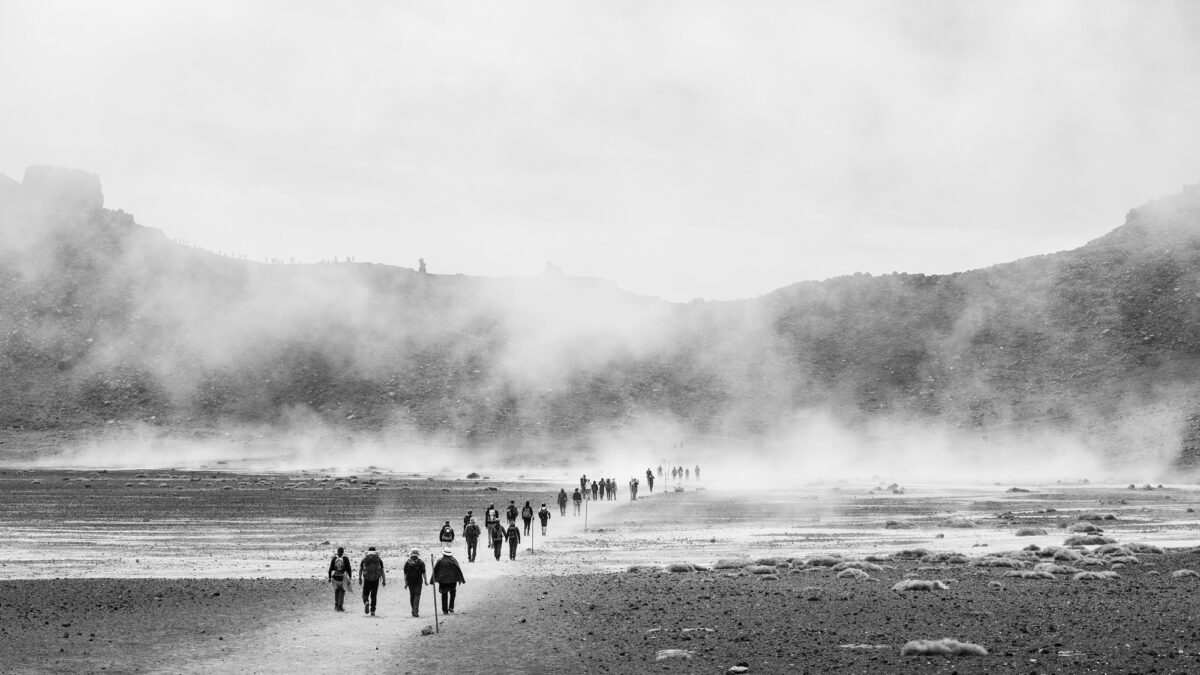
Photo - Sébastien Goldberg, published under Unsplash License.
The World Bank estimates that the climate crisis could drive up to 135 million people into poverty by 2030 and displace more than 1.5 billion people from their homes. This risk is not evenly shared as the poorest countries are the most susceptible to the damaging effects of climate change, despite registering the lowest emission levels. The Global South is particularly vulnerable due to socio-economic disparities, geographic vulnerabilities, limited resources and agricultural dependent economies. Geographic vulnerabilities such as coastal and low lying regions are particularly vulnerable to the effects of drought, sea level rise and floods. Compounding these geographical risks, smallholder farming in rural economic areas provides up to 75% of the food supply in many developing countries leaving many economies at risk of not being able to provide sufficient food supplies for communities. These factors have already led to mass community displacement along with loss of livelihood, habitat and ecosystems, raising significant challenges for just transitions and development.
The case for community driven collective intelligence for climate action
Despite the stark warning from the latest IPCC intergovernmental report for climate change, the 6th report outlines there are key areas such as inclusive governance, diverse knowledge + values and ecosystem stewardship where collective intelligence design and community based solutions can enable better climate outcomes. Focusing on collective intelligence we have been exploring what these opportunities might look like in practice, investigating opportunities across 6 key use cases; new forms of governance and accountability, anticipating, monitoring and adapting to systemic risks, Real-time monitoring of the environment, understanding complex systems, inclusive development technologies and distributed problems solving.1
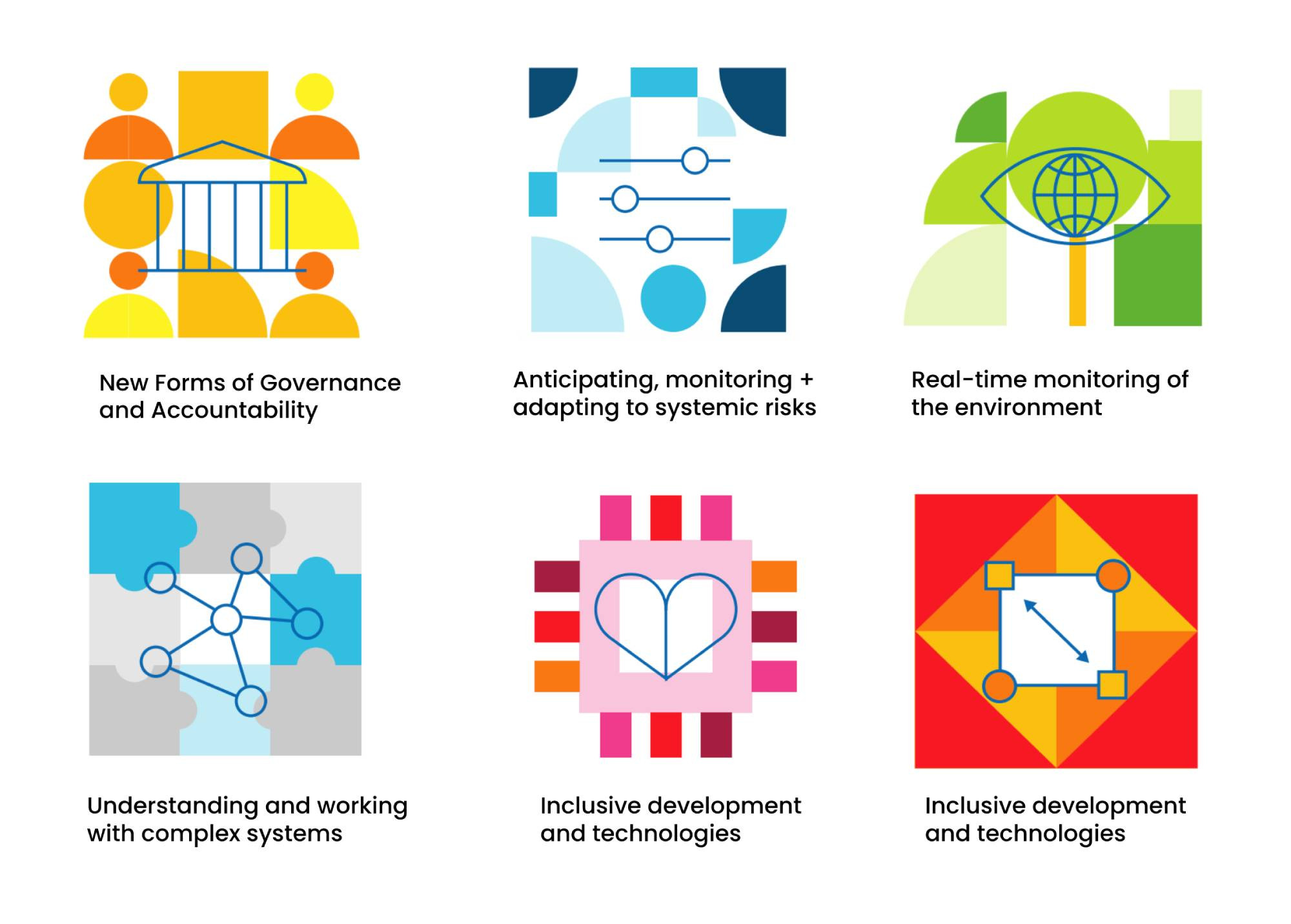
Six Use Cases for Collective Intelligence Design. Image UNDP/Nesta
Designing a collaborative social innovation model
When approaching innovation in the context of international development we wanted to overcome several key challenges to design a process that allows for addressing complexity, enabling effective collaboration and truly innovative thinking. We found existing models of innovation often struggle with complexity, fail to break silos nor enable truly systemic solutions to the challenges faced by communities. We set out to create a programme model that combined both action and learning at a grassroots local level and wider reflective learning across the UNDP network and global stakeholder landscape.
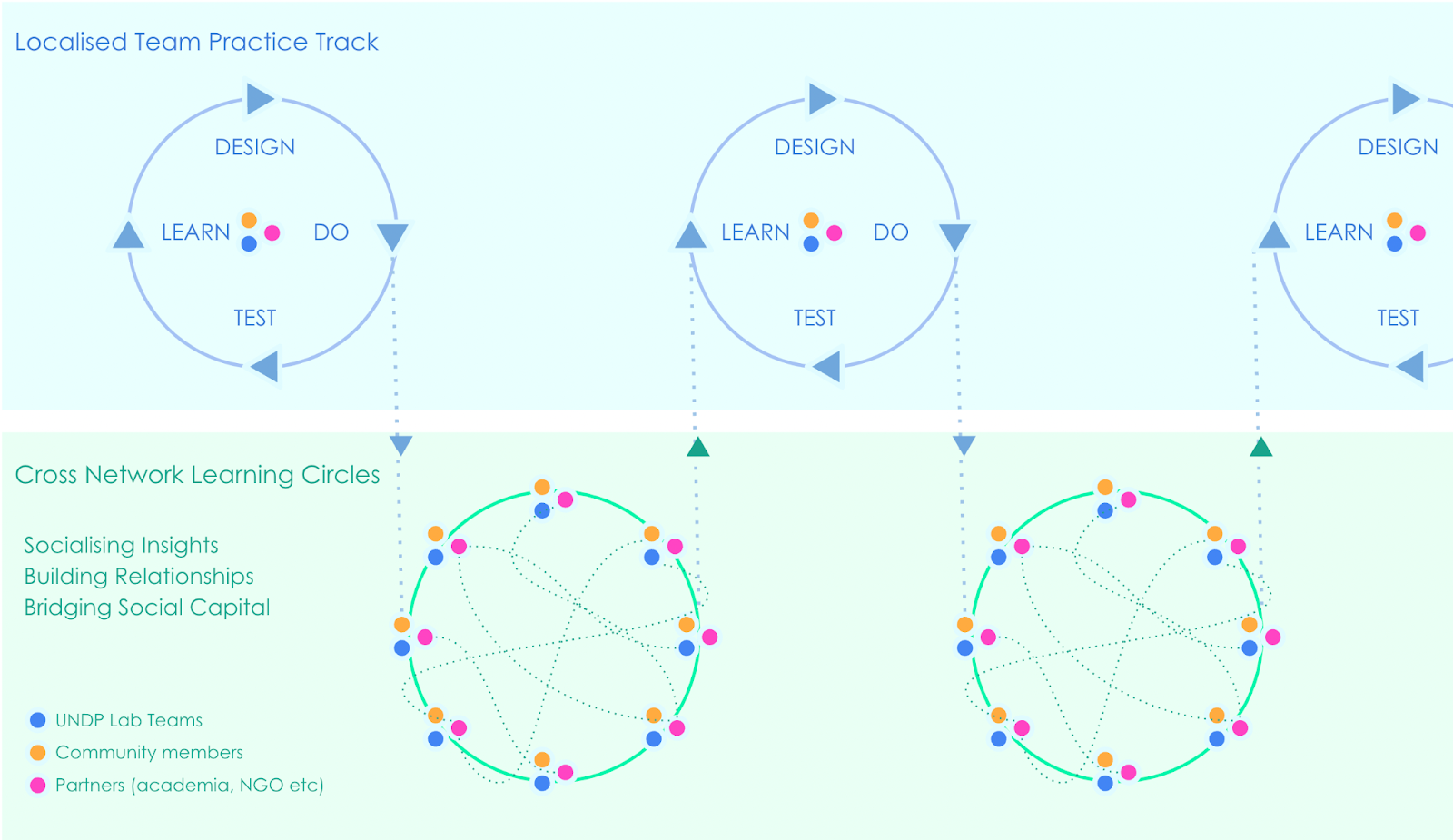
Over 12 months we will work through 3 innovation phases exploring localised climate problems, prototyping and testing new ideas and operationalising initiatives which address local community needs and support improved climate adaptation.
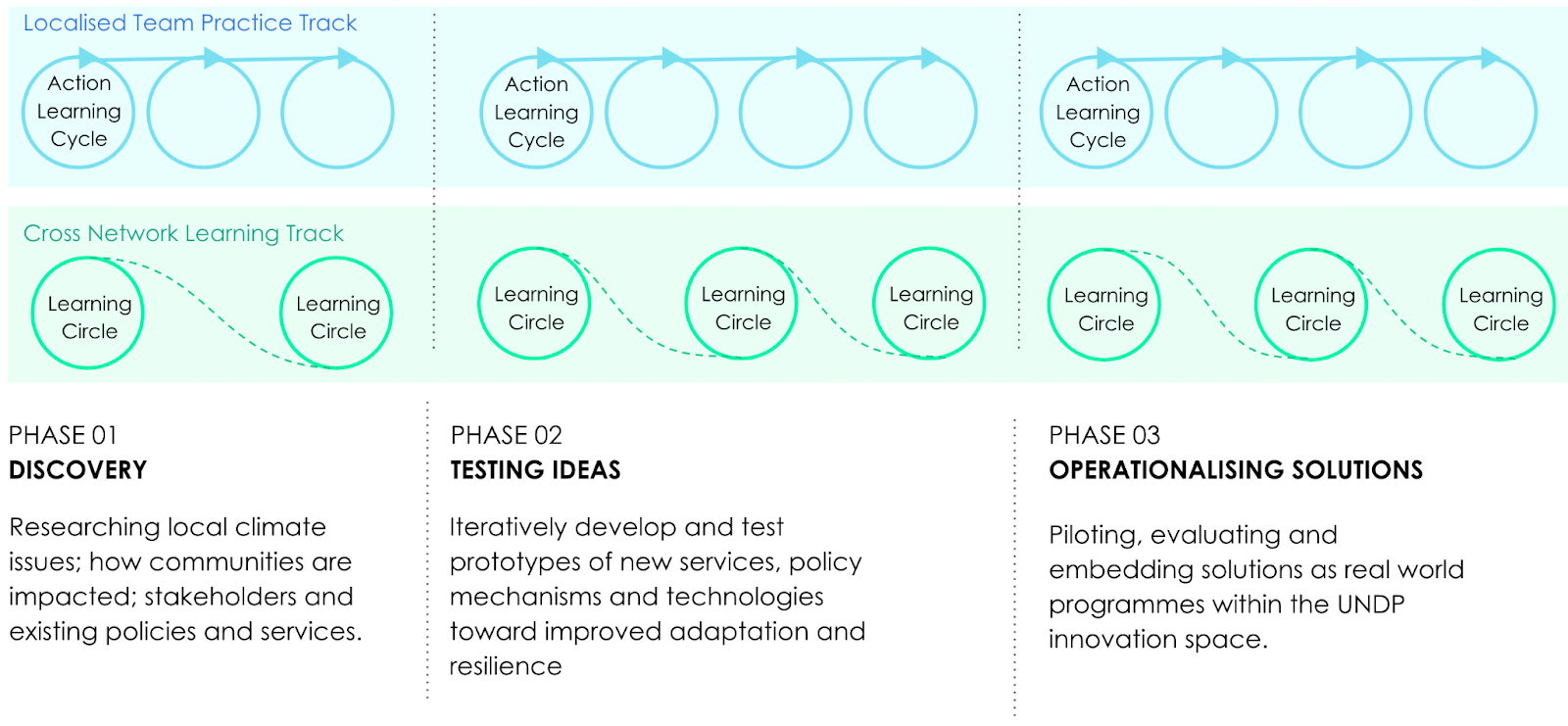
The journey so far
Phase One Discovery: Understanding localised climate issues and community challenges
This process started with a 2 month long discovery process where teams conducted research and developed a systemic view on national priority climate issues. This enabled teams to take a broad view towards understanding local climate issues and how communities are impacted, the existing policy and programme/service landscape along with identifying gaps and opportunities towards improving community based solutions.

Lab Case Study: Working with communities impacted by extreme flooding in Panama
The Climate Problem:
In Panama 73% of natural disasters are related to flooding, often destroying key infrastructure and displacing communities and exasperating structural inequality.
How communities are responding:
Communities already have grassroots initiatives such as barometer early warning systems at riverbanks, and informal whatsapp groups to share information and organise when faced with the risk of flooding.
Effectiveness of existing policy and programmes:
Assessment of existing policy demonstrates only 13% of early warning systems are fit for purpose while 87% were considered adequate or bad. Civic protection agencies have highlighted participation as a key enabler for successful programme delivery: “no matter the level of investment, without community involvement, the results will continue to be -mostly- unsuccessful”2
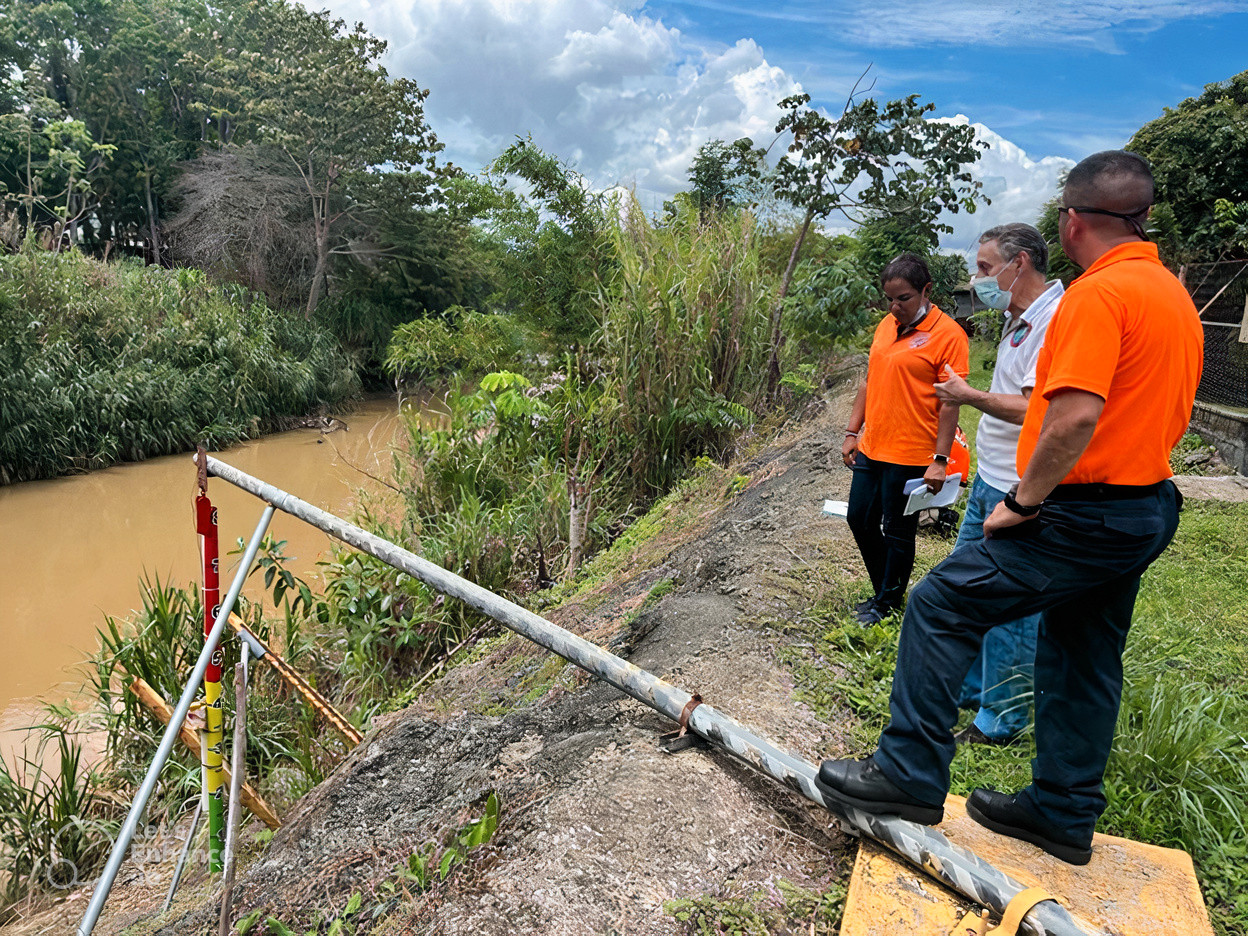
Grassroots interventions to disaster risk management.Image UNDP Panama
Phase Two Testing Ideas: Prototyping new approaches
During phase two of the programme we moved from researching and understanding the problem space to designing, prototyping and testing out new interventions and initiatives including new technologies and systems, services and participatory climate policy design.
Exploring Opportunities for Collective Intelligence Design
We launched phase two with a week-long collective intelligence design workshop in Istanbul. Labs prioritised the problems uncovered through discovery and explored various opportunities for collective intelligence design, creating prototypes of climate service and policy initiatives to test with communities and wider stakeholders.

UNDP Labs prototyping different collective intelligence approaches to climate issues
Over the duration of the next 4 months Labs tested their initial concepts with communities to evaluate if they were delivering the desired impact to communities and address the challenges that they have been facing. Once initial value propositions had been tested, teams increased the fidelity of their prototypes to test the end-to-end journeys of their concepts and critical touchpoints with end users.
Lab Case Study: Prototyping new approaches to disaster risk management
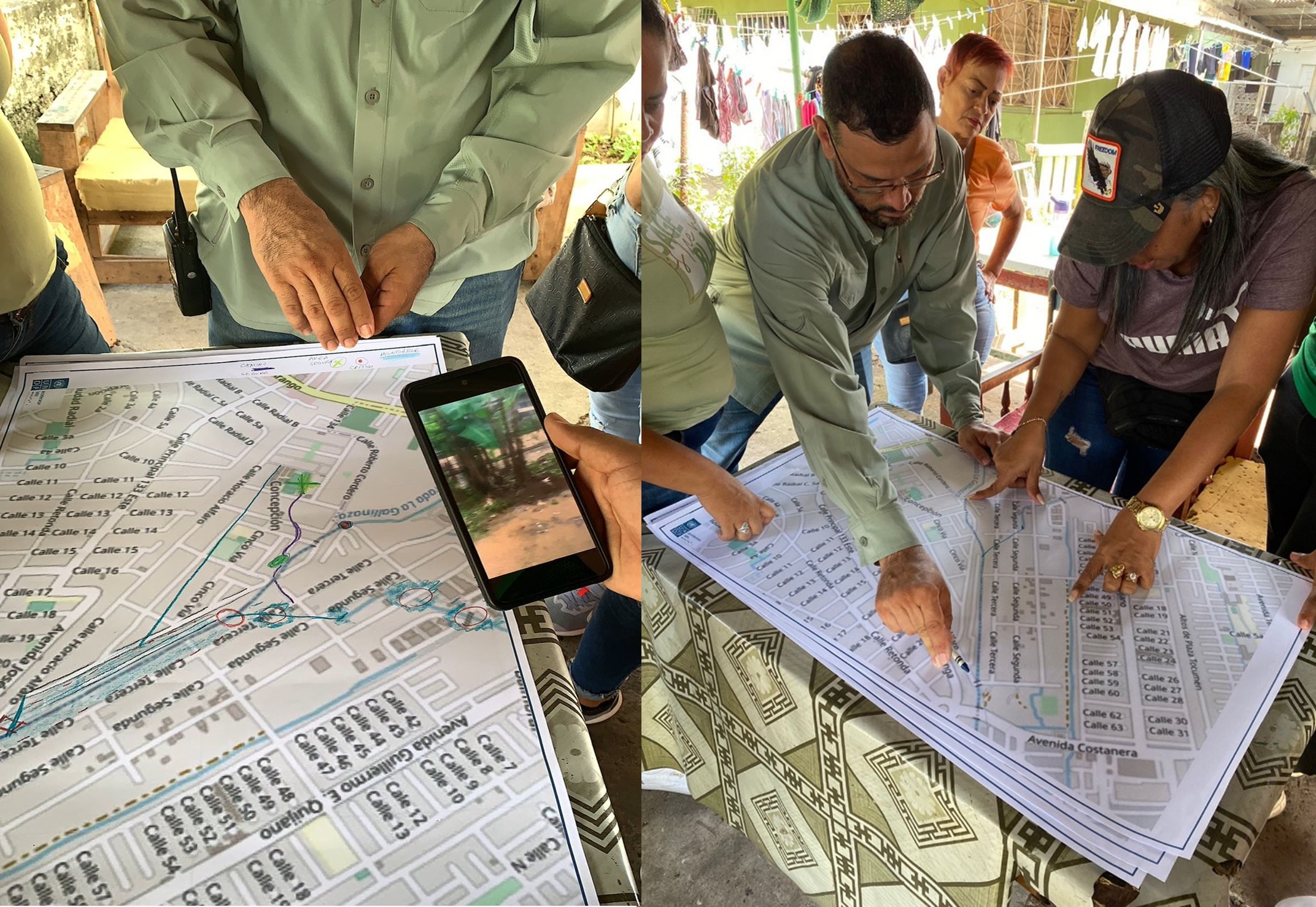
Mapping areas of vulnerability with the community. Image UNDP Panama
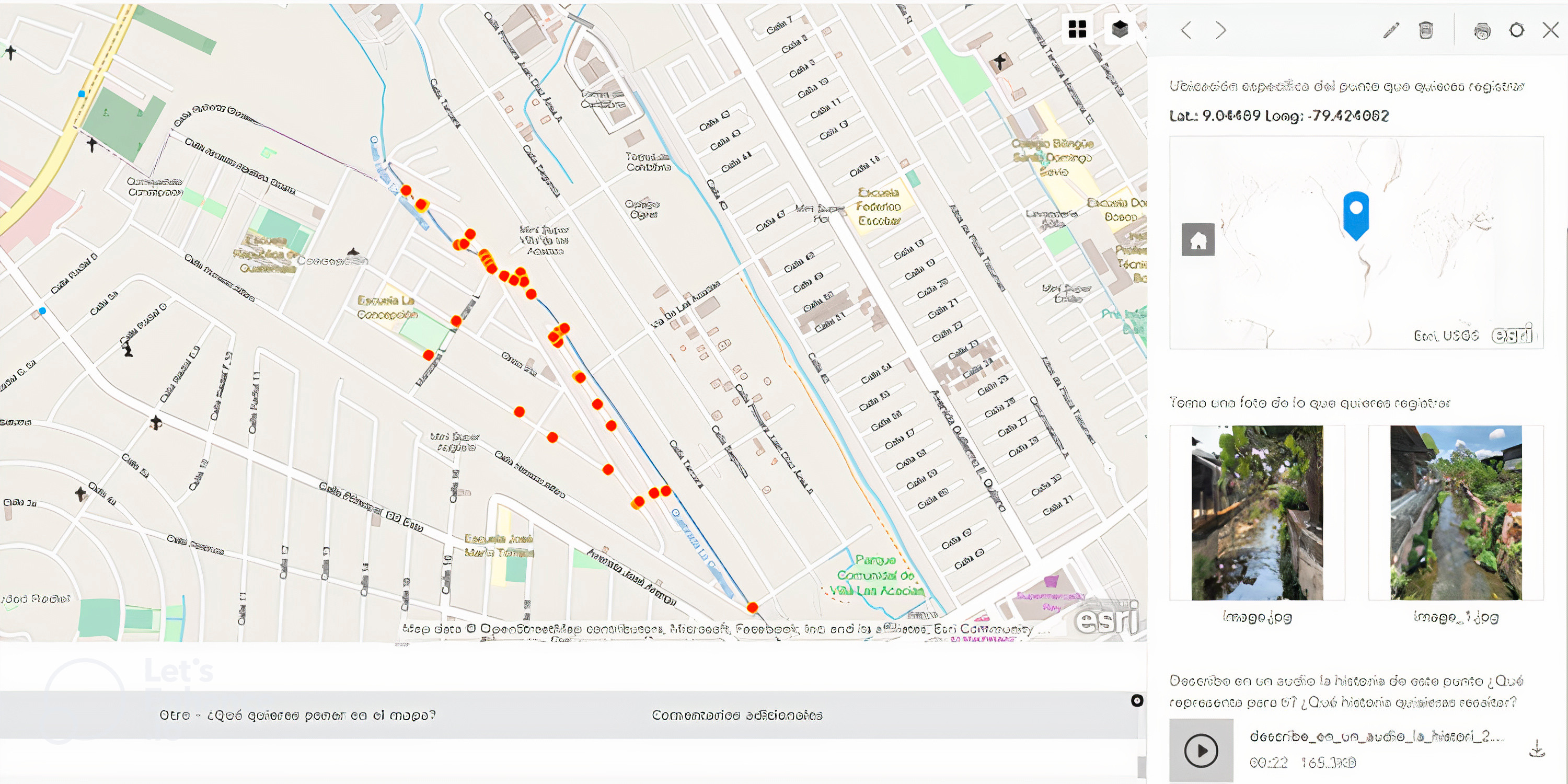
Prototyping hyper local vulnerability digital maps for better data + decision making. Image UNDP Panama
As we have seen, communities in Panama are facing high flood risk, yet existing policies and programmes are falling short, leaving communities to adapt with their own novel solutions and ways of organising. How can local community knowledge be elevated and combined with institutional efforts? The team set out to answer this question. By co-creating vulnerability maps with the community they were able to capture an on the ground view of where communities are experiencing risk and combine it with existing institutional efforts for more accurate real time data. Co-creating the system with communities was a key strategy in not only building resilience but repairing and strengthening relationships between institutions and communities that are affected.
Elevating Insights: Nurturing cross network collaboration and identifying global patterns and trends.

Learning circle facilitated by Bas Leurs, focusing on identifying insights across actors, power dynamics and resource flows.
Teams came together in Kenya for one of the first in-person learning circles of the programme, exploring system dynamics in each context and identifying global patterns and insights across diaster risk management, climate related conflict, inclusive governance and other thematic areas. By bringing the conversation together in one place and creating a forum for discussion teams harnessed connections on shared problems, could share support and skills and build relationships that are often difficult to achieve in online distributed environments. Exploring ongoing work in the local context, the Kenyan Lab invited communities, academic partners, NGOs and gov/civil servants participating in the project to attend and share their experiences. This was an opportunity to hear first hand from people involved in the projects and for them to share their experiences collaborating in the ongoing initiatives. This enabled a platform for communities to share their perspectives but also for governments and NGOs to engage with communities as key partners in the process, changing the dynamic of the process and dialogue.
Phase Three, Operationalising Solutions: Embedding new innovative approaches to climate adaption.
During the final programme phase Labs have been translating prototypes into fully functional programmes and services. Throughout this phase we have been working on creating blueprints which define the technologies, operations and people/partners necessary to deliver the programmes along with running pilots in real world settings with real people. During this process teams will focus on evaluating the processes and operations needed for successful delivery, but also, crucially the potential impact delivered to communities and organisations that are engaging with the programmes.
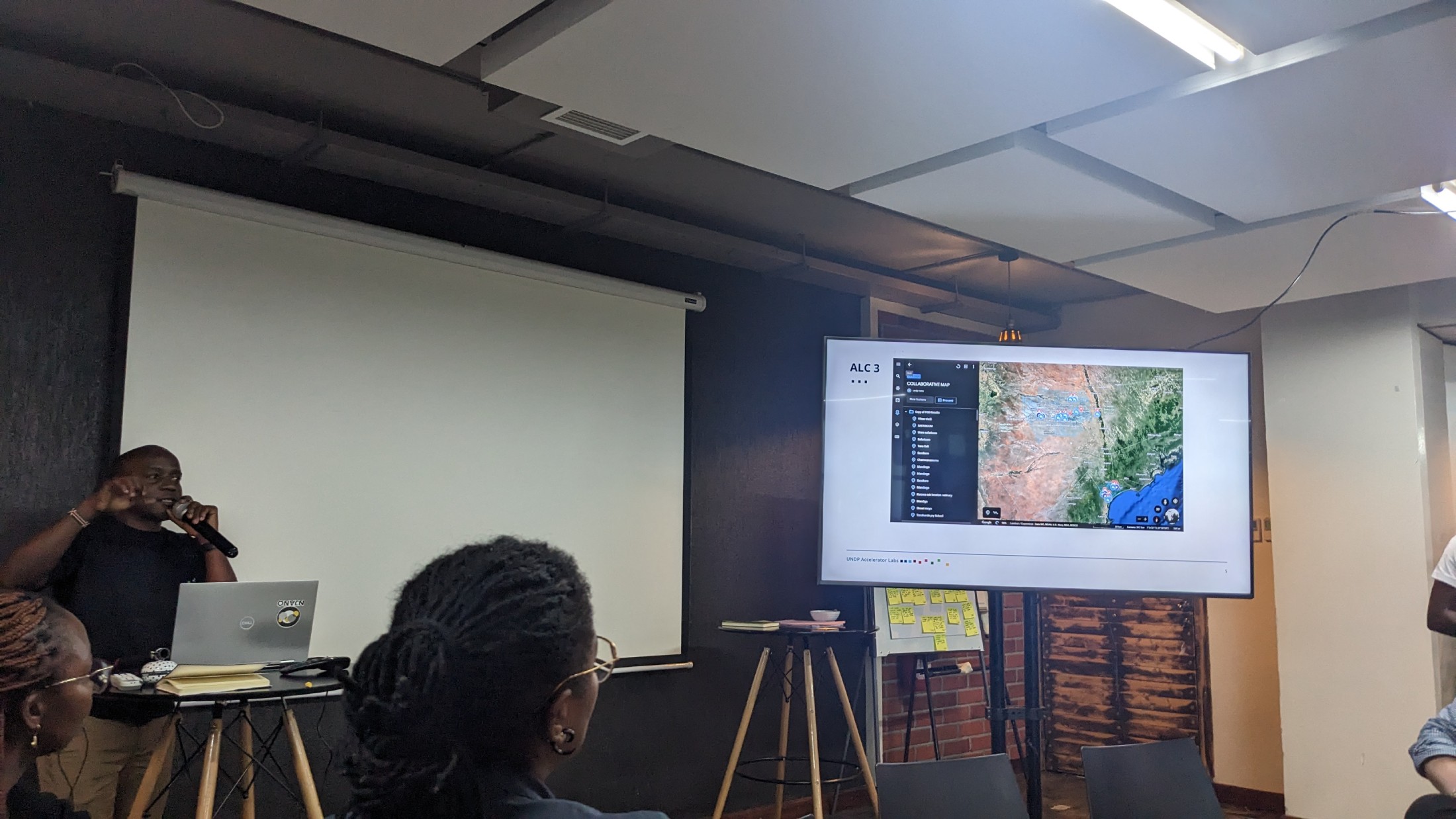
Presentation by the UNDP Kenya Lab on their work mapping water infrastructure and access points.
Building Collective Intelligence - Lessons and Discoveries
01. Bridging grassroots and institutional knowledge unlocks new perspectives:
Directly involving communities in the generation and custodianship of climate based knowledge can break the epistemological divide in local and scientific knowledge, build skills, instil a sense of ownership and encourage more active participation. In the words of Donna Harrawy ‘all knowledge is political’ and has political agency. Creating mechanisms for ground up knowledge creation changes the nature of how knowledge is produced and whose needs and perspectives it represents. For example the Samoa Accelerator Labs initiative focusing on biodiversity management has augmented top-down scientific management practices with local knowledge generation and context sensitive approaches that focus on the community as leaders in knowledge generation and management.
02. Communities are already responding to climate change, highlighting what is already working and empowering communities is key to success:
Often efforts towards tacking climate change are framed around the capacity for technological innovation, but in the global south communities are already responding and adapting to climate risks with their own innovative measures. As we have seen in Panama’s case communities are already responding with their own solutions to adapt and respond to flooding. Through identifying what is already working within communities and directing financing and support to existing grassroots solutions communities can be much more equipped to adapt to climate risks.
03. Involving a diversity of perspectives and voices often leads to more ambitious and innovative approaches that better reflect the needs of communities:
Engaging with a diverse group of people can not only enable marginalised voices to be heard but lead to more ambitious policy and design choices that better reflect the needs of communities are more accepted. Involving communities in the design of initiatives can lead to better decision making as institutions have more direct understanding of their needs and views. Through several of our participatory policy design initiatives, direct community engagement has proved to not only align policy making to community needs but to come up with alternative approaches that wouldn’t have emerged through traditional policy approaches.
04. Co-creation spaces are the heart of good design practices:
Creating spaces for shared exchanges, collaboration and learning across stakeholder groups can lead to increased trust, legitimacy and understanding between different viewpoints. Taking stakeholders on a learning journey together can improve communication, relationships and create the foundations for lasting partnerships. As we have seen throughout our learning circles during the programme creating space for co-creation and discussion can often lead to a change in dynamics, an increased stake and agency towards the challenge at hand.
Read more about the project:
- 01. IPCC 6th Assessment Report. Available at: https://www.ipcc.ch/assessment-report/ar6/
- 02. Early Warning Systems - How often do you think about what to do in the case of a flood? Available at: https://www.undp.org/acceleratorlabs/blog
